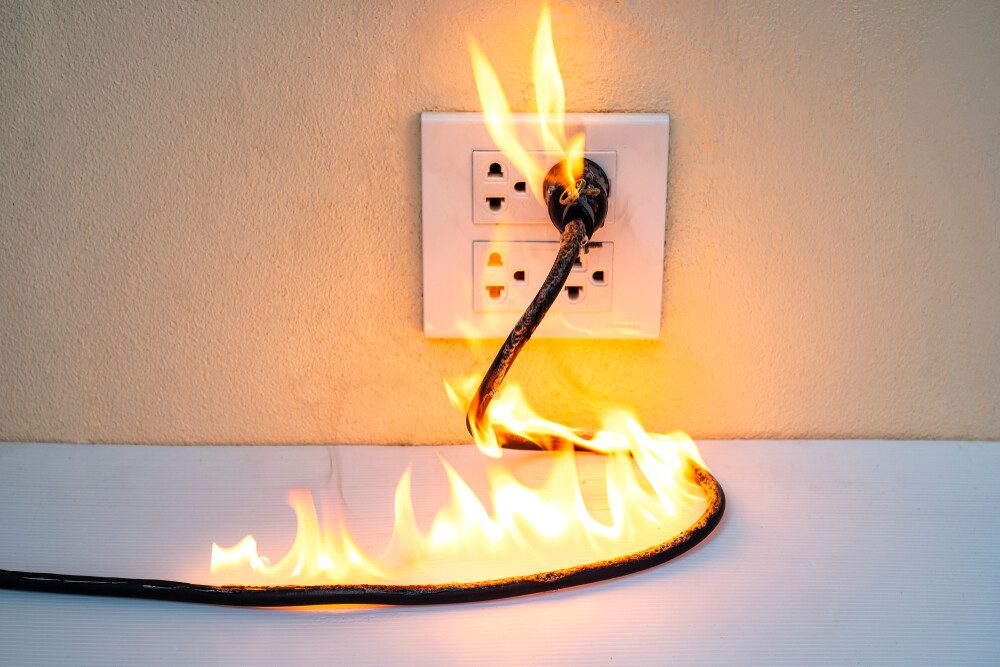Electrical emergencies and faults cause 40% of home fires in New South Wales. Although most wiring problems are evident at first glance, there are underlying dangers that can lurk under the plain sight.

A typical example of insidious electrical faults is a loose outlet. Unknowingly, a wobbly outlet plug can start a fire without you ever knowing the problem at all. To prevent a fire from breaking out behind the wall, you should understand the dangers loose outlet plugs are posing to your household.
How Loose Outlets Cause Fires
Most people would mistake a loose outlet to be a problem with the plastic fixtures. However, the fault might occur within the wiring behind the panel ‒ where a short movement between loose blades can cause a high-energy discharge. This event is known as an arc fault, and it releases a massive amount of energy in a short period.
When the spark hits the light and flammable materials, it could catch fire. Even worse, it could grow substantially inside the walls, and you won’t notice it immediately.
Moreover, an arc could reach temperatures up to 19,000° Celsius, way beyond the flashpoints of most residential construction materials. Within milliseconds, a small arc is all it takes to start a house fire.
But before we get to the worst-case scenario, you should understand how power outlets become safety risks only from using them.
How do Electrical Sockets Get Loose?
Over time, power outlets loosen up as plugs go in and out of them. The process happens faster for people with terrible habits of yanking plugs instead of pulling them properly.
Besides, most households have their electrical sockets fixed in drywall, and applying pressure will cause it to loosen over time. Once detached, the wires will begin to come off the fixtures and eventually present a risk of an arc fault. Until then, it only takes a matter of time before it can cause a fire.
However, you can tell when an electrical socket is loose most of the time, as cords don’t stay in place. Also, the outlets may flex or sink underneath your hand when trying to plug something in, indicating a loose fixture.
What To Do About a Loose Power Outlet?
Any electrical-related repairs should only be done by a qualified level 2 electrician. However, if you think the task is easy enough to do on your own, make sure to have sufficient protective equipment and proper tools to avoid severe problems.
To begin, the first thing you should do is cut off the power supply by turning your switchboards and main breakers off. Then, test your sockets with a voltage detector before touching any metal leads and connecting wires.
After clearing the outlets from electricity, you can then cap off the outlet frame. Depending on the situation of the internal parts, you may need to use an outlet shim to stop a socket from moving or have it entirely replaced. The latter is a much more complicated task, so take extreme care, or simply have an electrician replace it for you.
Regardless of the problem, contacting a professional will always be the safest and most convenient option. Accredited electricians can fix it in a matter of time and repair other faults that might occur behind the scenes.
Loose Outlets? No Worries
A loose electrical socket is among the hidden dangers of many electrical systems in Sydney. Most of the time, people would only neglect the problem and keep on plugging things in until the metal conductors arc and start a fire.
So if you’ve got one or more loose power outlets at home, calm down and don’t worry. You just have to stop using them in the meantime and call Gordon Powers. We’ll be in and out within the hour.
At Gordon Powers, we understand your need for secure and reliable power outlets. For any electrical installation, repairs, and replacements, contact our friendly staff at (02) 9199 7480. We are available 24/7 to promptly and safely improve your electrical system on-demand.










